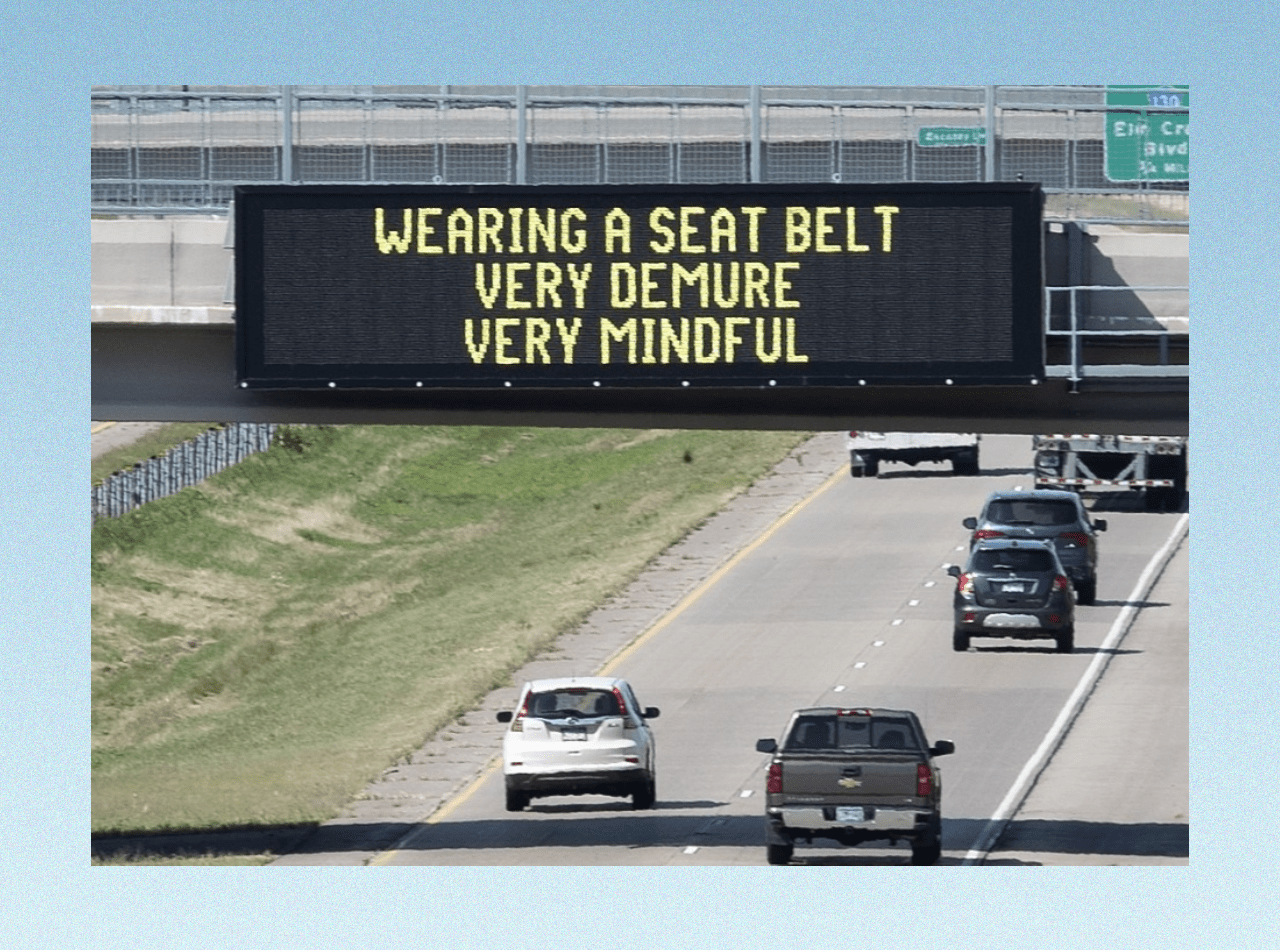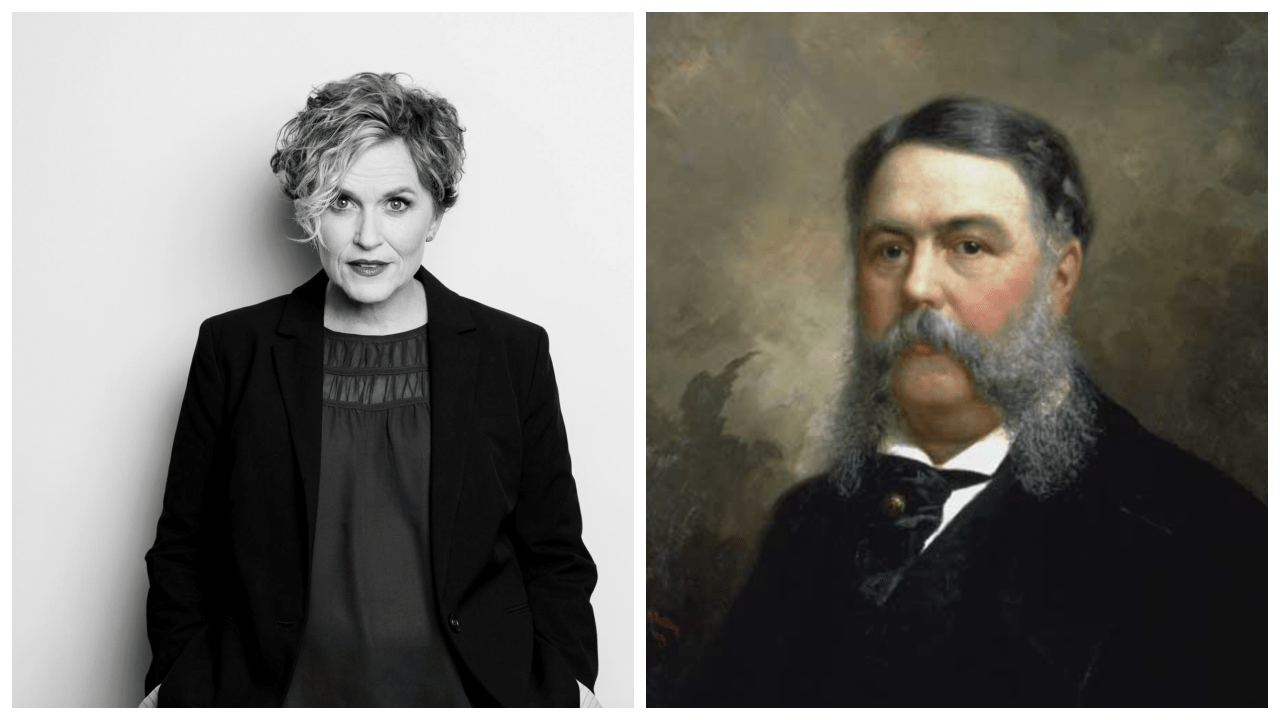If you're working within the belly of the bureaucratic beast, you might think your odds of going crazy viral would be hampered by the slow, byzantine nature of things. That's not the case, however, if you're at the Minnesota Department of Transportation.
Reliably, the annual Name-a-Snowplow contest captures the imaginations of local media orgs, even the overly critical killjoy ones. But since 2016 MnDOT workers have found a year-round outlet for scoring internet Ws: those electronic freeway notice signs. Just this past summer the department discouraged violent car wrecks by summoning St. Paul-born Olympics hero Suni Lee, and they followed it up last week with an allusion to a runaway TikTok meme that this 37-year-old reporter is simply too old to understand:
Multiple Racket readers (two!) reached out to us with that exact question: Who's behind MnDOT's grabby messaging campaign?
Turns out Kristine Hernandez, a 20-year veteran of the department, leads comms for the state's Toward Zero Deaths infinitive. Today their "Message Monday" campaign splashes across almost 500 electronic message boards that, according to Hernandez, were mostly blank until '16.
"We used [the signs] for crash- and weather-related messages, but largely they were going unused," she says, adding that, after years of plummeting numbers, plateauing traffic deaths spurred the fresh approach. "We thought: How can we reach these people? Let's him 'em right where they are."
The very first crack at it didn't gild any lilies, and instead matter-of-factly warned about deer carnage on the highways via a folksy little pun:
OH DEER!
THEY'RE HERE
WATCH FOR 'EM
(Hernandez believes "less is more" when it comes to sign writing; her team limits them to 18 characters per line, three lines max.)
The "Message Mondays" writers' room, so to speak, is mishmash of various agencies and departments, including the MnDOT comms teams, the U of M's Center for Transportation Studies, the Toward Zero Deaths crew, the Department of Public Safety, and—you're not gonna like this one, Minnesotans—even literal Iowans from the Iowa Department of Transportation. "It has kinda morphed over the years into a fun little group," Hernandez says.
Two to four times per years, about 15 total folks gather to riff, write, and bank slogans, though styles do tend to differ.
"Different regimes have different ways of communication," Hernandez says with a chuckle. "DPS, the law-enforcement brand of our state government, they want more punitive, direct kinds of messages; we use some of that right before enforcement waves around seatbelts and drunk driving. Some other stakeholders like to remain more clever or humorous."
The latter genre of messages produces the most memorable hits, like last fall's reference to Taylor Swift or the Gen Z-indebted "very demure, very mindful" home run.
"We get good hits every once in a while, right?" Hernandez says. "That [demure, mindful] one started from a social media worker at MnDOT who saw something similar in Mississippi. I said… 'What are you talking about?!' I broke down and got TikTok, but state government employees are banned form using it on our work phones because of the whole China thing. I talked to my daughter, who's at the U of M, and she said, 'Oh my god, people have been using this tagline for like a month!' We like more of a call to action, so we switched it to 'wearing a seatbelt,' and yeah, it went crazy with that younger generation."
There has been some federal government handwringing over whether the funny signs might actually be distracting drivers, thus creating hairier roadways, but Hernandez says her team accounts for that. MnDOT has the tech capabilities to turn off specific areas of messaging during rush hours, congestion events, and extreme weather. The feedback from motorists is reportedly positive; the MnDOT team hears from delighted drivers all the time, as well as complaints from frustrated ones who just don't get the jokes... "Well move on, then!" Hernandez implores them with a laugh.
When the pandemic hit, Hernandez figured fewer drivers would mean fewer deaths on the roads. Unfortunately, the wide-open roads attracted all sorts of lead-footed knuckleheads, as my anecdotal observations (and less anecdotal national reporting) confirms. (Apparently male drivers 16-34 represent the knuckliest of heads.) As of last week, Hernandez says year-over-year highway fatalities are up across Minnesota—308 this year compared to 275 last year.
Hernandez knows goofy signage isn't a cure all. It's a tool in the toolbox, the rare one in government work that also gets residents smiling.
"We're still working on those 100-mph drivers… it's crazy out there," she says. "We know some high-risk drivers won't care about these messages, but we're trying to change the culture around traffic safety. If we can hit the influencers of those folks, maybe we can hit 'em that way—their wife, girlfriend, sister."







